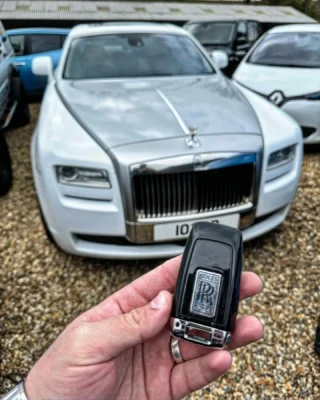You’ll Never Guess This Car Key Case Repair’s Tricks
Car Key Case Repair: A Comprehensive Guide
The performance and benefit of car keys have developed significantly with improvements in innovation. As cars have transitioned from conventional metal keys to sophisticated key fobs and smart keys, the importance of keeping these essential elements has ended up being vital. One element that typically demands attention is the repair of car key cases. This article explores the intricacies of car key case repair, dealing with typical issues, efficient repair approaches, and practical suggestions for preserving key durability.
Comprehending Car Key Cases
Car key cases are the protective real estates for the electronic parts and battery of car keys. They are designed to protect the internal mechanisms from wear and tear due to day-to-day use. Nevertheless, over time and with regular handling, these cases can become scratched, split, or broken, jeopardizing not just the aesthetic appeal but potentially the functionality of the key itself.
Typical Issues with Car Key Cases
- Fractures and Breaks: The most typical problem occurs from unexpected drops or pressure applied to the key.
- Run-down Buttons: Frequent usage can lead to the wearing down of buttons, making it difficult to lock or unlock doors.
- Battery Compartment Damage: If not dealt with effectively, the compartment that houses the battery can become loose or misaligned.
- Water Damage: Accidental direct exposure to water or humidity can damage the electronic parts within the key case.
- Cosmetic Damage: Scratches and dents can lessen the overall visual of the key case.
| Issue Type | Description | Effect on Functionality |
|---|---|---|
| Cracks and Breaks | Physical damage from drops or pressure | May render the key inoperable |
| Run-down Buttons | Buttons become unresponsive or need more force | Trouble in operation |
| Battery Compartment Damage | Loose or misaligned compartment impacting battery gain access to | Key may not function at all |
| Water Damage | Exposure to moisture destructive internal electronic devices | Breakdown or short circuit |
| Cosmetic Damage | Scratches and visual wear | No functional impact, however minimizes appeal |
Methods for Repairing Car Key Cases
Fixing a car key case can vary from DIY solutions to professional services. Here are a number of approaches to consider when faced with a damaged key case:
DIY Repair Techniques
-
Super Glue for Cracks: For small cracks in plastic key fobs, a high-quality very glue can efficiently bond the split back together.
-
Epoxy for Breaks: For more significant breaks, a two-part epoxy is recommended, supplying a stronger hold after curing.
-
Changing Buttons: If buttons are used, they can in some cases be changed using button packages available online. Alternatively, you can use silicone sealant to develop brand-new buttons.
-
Cleaning up and Drying: In the occasion of water exposure, quickly disassembling the key fob, air-drying the components, and utilizing rubbing alcohol to clean up may restore the electronic devices.
-
Protective Covers: To avoid recurring damage, think about purchasing a protective silicone case that fits over the key.
Professional Repair Options
When the DIY technique is not ideal or the damage is substantial, it might be a good idea to consult an expert locksmith or car dealership. Professional services can offer:
- Reprogramming: If electronic components are harmed, reprogramming services can bring back lost performance.
- Key Replacement: In cases beyond repair, a total key replacement might be essential, which typically includes reprogramming the brand-new key to deal with the vehicle.
- Shell Replacement: Professionals can change the outer shell of the key fob while moving the internal systems safely.
Preventative Measures for Key Longevity
To lengthen the life expectancy of car key cases and prevent common damages, think about the following pointers:
- Avoid Exposing to Moisture: Store keys in a dry environment and prevent leaving them in wet pockets or locations.
- Utilize a Keychain: Attaching your car key to a large keychain can help avoid drops and make it easier to locate.
- Minimize Pressure: Be mindful of how much pressure is used to key fobs throughout use; avoid resting on keys or putting heavy products on top of them.
- Regular Cleaning: Regularly tidy the key fob and get rid of debris to avoid buildup that could damage buttons and create extra wear.
FAQs about Car Key Case Repair
Q1: Can I fix a broken key fob myself?
A: Yes, lots of individuals can fix small damages such as cracks and button replacement utilizing incredibly glue or epoxy. Nevertheless, complicated electrical concerns might need expert help.
Q2: How do I understand if my key fob needs to be replaced?
A: If the key fob is significantly unresponsive, the battery is routinely passing away in spite of replacements, or if it is physically harmed beyond repair, it may need to be replaced.
Q3: What if water enters into my key fob?
A: Immediately dismantle the key, dry it completely, and tidy any elements exposed to wetness. If issues continue, consult a professional.
Q4: How can I avoid damage to my car key?
A: Use a protective case, prevent direct exposure to moisture, and store it firmly when not in use.

Q5: Are there particular tools I need for DIY repairs?
A: Basic tools such as extremely glue, epoxy, a little screwdriver set, and silicone sealant are typically adequate for DIY repairs.
Car key case repair is an essential ability for any vehicle owner aiming to maintain their keys’ functionality and look. By comprehending typical concerns, utilizing effective repair strategies, and carrying out preventative steps, chauffeurs can guarantee their car keys stay in optimum condition for years to come. Whether going with a DIY technique or looking for professional assistance, taking the essential actions can considerably extend the life of car keys and keep them operating efficiently.


